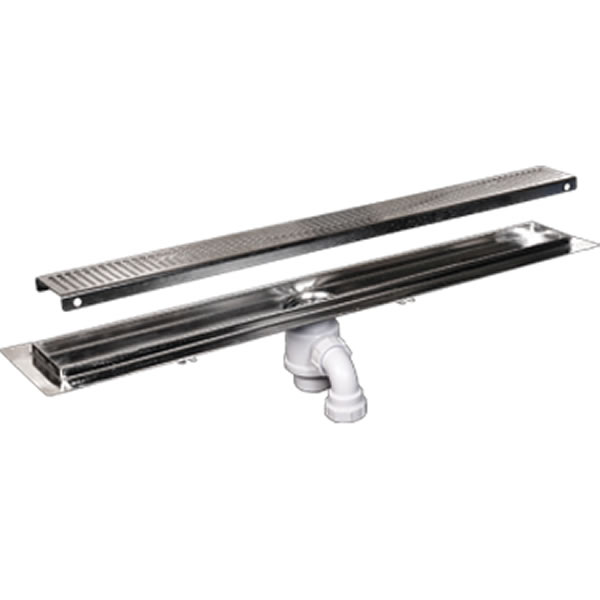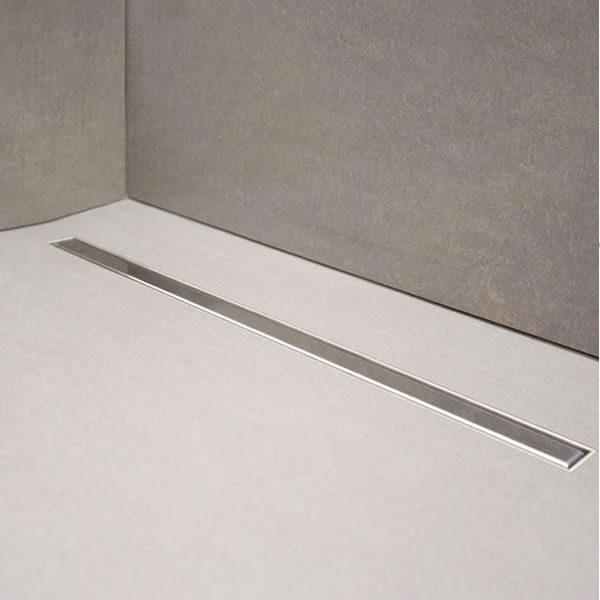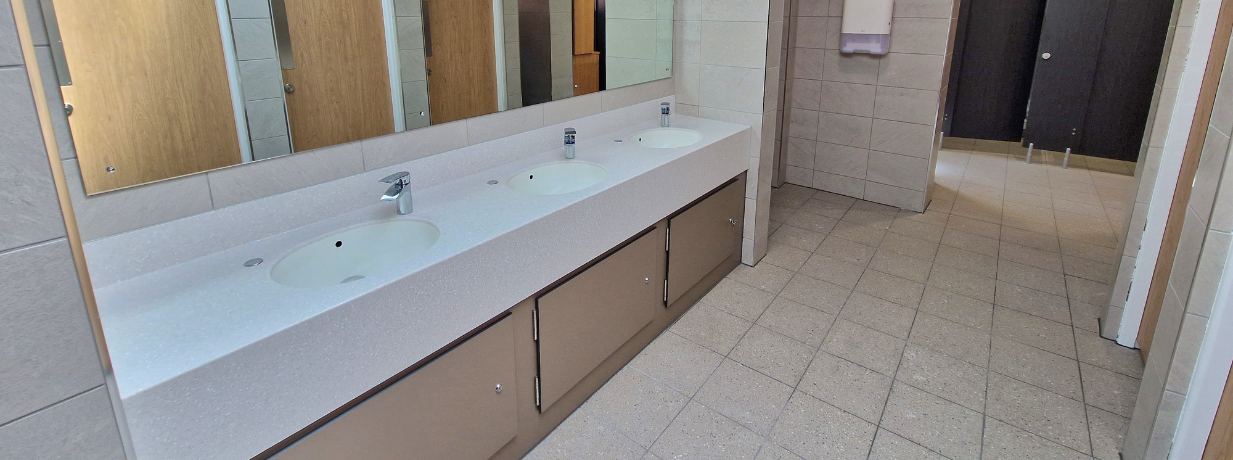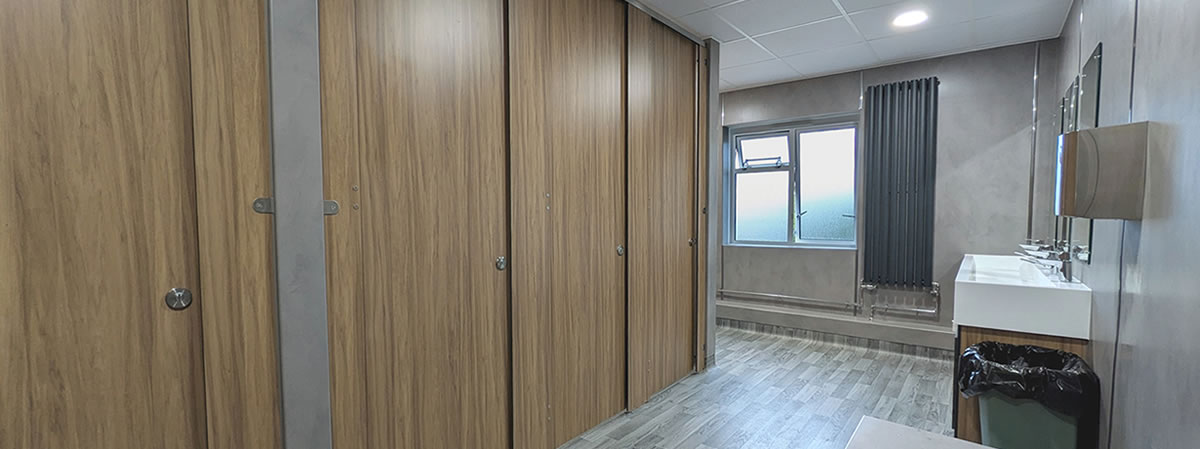Shower Drainage
Shower Drain Systems with Bespoke Finishes available
We offer a range of shower drain styles and lengths suitable for commercial use in shower areas. Ideal for use in changing room facilities in Schools, Gyms, Leisure Centres, Swimming Pools, and Campsites. Our drains and gullies come in a range of finishes, all manufactured from quality, high-grade stainless steel with different grate styles.
Choose from our selection of rapidly available off the shelf gully’s supplied in set lengths or contact our sales team to discuss bespoke shower gully options. Our bespoke options will suit longer lengths and include different outlet positions.
Can't see what you're looking for, or have a specific requirement for your new or existing Shower or Wetroom area, please contact the Commercial Washrooms team who will be happy to help.
Shower Drain FAQ
How does a Shower Drain work?
Shower drains work by allowing water to flow down the drainage and funneling it into sewage waste water systems. Here are the different parts of a shower drain and how they work:
Drain trap
The drain trap can hold water to seal the drain from sewage gases and can hold hair, debris and wash products that could block the drain.
Venting
When you use your shower, the water will flow down the drain and this will create a vacuum within the drainage system which can slow the flow of water. This is where venting comes in. Venting allows the water to flow more freely through the drainage as air flows into the drain.
Drain cover
Drain covers are used to prevent large objects from falling down the drain and also acts as a barrier so that less clumps of hair enter the drain and block it.
How to unblock Shower Drain
If your shower drain becomes blocked, there are are number of things you can do to unclog it, including:
- Using baking soda and vinegar - firstly, you will need to pour a cup of baking soda down the drain and leave it for a few minutes. Then, you will need to pour a cup of vinegar down the drain, this time leaving the shower drain for a few hours. After this time, you simply need to turn the shower on to rinse the drain before use.
- Use drain cleaner - drain cleaners have been specifically designed to help unclog drains so it may be worth a try. All you need to do is follow the instructions on the drain cleaner’s label but usually this is a simple process involving pouring the cleaner down the drain and giving it some time to work before using your shower. As these chemicals are strong, you will need to take care so that it does not come into contact with your skin - wear gloves and open windows for ventilation.
- Use a plunger - plunging drains can be an effective way of unblocking them.
- Use boiling water - sometimes all you need is some boiling water to unblock your drain. Pouring boiling water down your shower drain regularly will help to keep it clean.
- Use a long wire or coat hanger - if you can’t reach the blockage in your shower drain yourself, try using a wire to fish out any hair or gunk that is causing the blockage.
If you are looking to clean your shower drain or stop your shower drain from smelling, you can follow the above steps to keep your shower drain clean and odour-free.
What does a Shower Drain look like?
Shower drains are available in different styles and sizes, however, there are two distinct types of shower drains, linear and point drains.
Linear shower drains
Linear shower drains may be seen as more stylish, as they are not as common as point drains. Their long and narrow design make them ideal for placing along the wall of the shower, but they can also be placed in the middle of the shower.
Point drains
Point drains are commonly used in showers. They are usually placed in the middle of the shower floor, with the shower floor sloping towards it from different directions.
In terms of their material, shower drains are usually made from stainless steel as this is a hard-wearing material which is resistant to corrosion and staining.
How to remove a Shower Drain Cover
How you remove your shower drain cover will depend on the type of drain cover your shower has. Here are the main styles of shower drain covers and how you can remove them to clean your shower drain:
- Pop-up shower drain cover - some shower drain covers can easily be popped-up and all you need to do is pull the shower drain cover straight off. If you struggle to do this, try moving it about side to side to loosen it up.
- Screw-in drain cover - these shower drains are flat or slightly raised and can be removed with a flathead screwdriver.
- Lift and turn drain cover - with the drain cover open, see if you can spot a set screw. If you can’ see one, you can turn the cover counterclockwise to remove it. If, on the other hand, there is a screw, you will need to use a flathead screwdriver or allen wrench to loosen the drain cover before removing it.
- Push and pull drain cover - for push and pull drain covers, you need to firstly hold the stopper in place whilst you unscrew the top part of the drain cover (you may need something to grip onto this with, such as something rubbery). Once this step is completed, you can unscrew the brass insert with a flathead screwdriver and lift the stopper out to remove it.
- Flip-it drain cover - these shower drain covers are easy to remove as you simply need to grab hold of the cover and rotate it as you pull it out.
Which Shower Drain is best?
When deciding which style of shower drain will be best for you, consider the following:
The size and location of your shower
Linear and point drains can usually be placed anywhere on your shower floor so it will mainly come down to what looks best.
- Linear shower drains are usually placed along the shower wall but can also go in the center of the shower floor. It is, however, recommended that there is a wall insulation with one-sided sloping which will reduce the need to cut tiles and allow for your drain to perform well.
- Point shower drains can come in different shapes (triangular, square and circle). Whilst round and square drains can fit in well with any washroom design, triangular drains work best in square or rectangular shower floors.
The grate finish
Picking a shower drain which has a grate finish to match your washroom or bathroom’s design will help to bring a sense of style to your shower!








